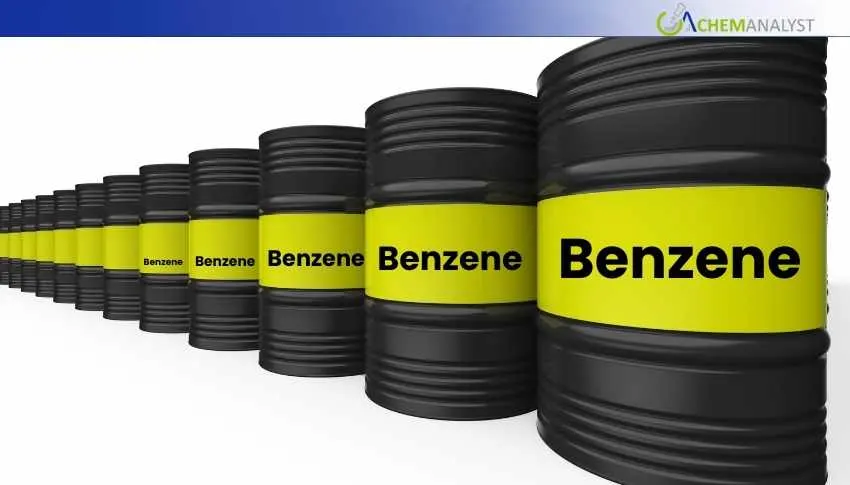Welcome To ChemAnalyst

In North America and Germany, the benzene market was under pressure from weak demand and solid supply in early September. In North America, steady refinery running rates and high inventory levels kept buyers cautious, and limited export interest contributed to this mindset. In Germany, refiners were operating at normal rates and holding adequate supplies, but demand was weaker for polymer-linked derivatives, and limited demand was observed for international market. While phenol demand provided some offshore support in each region, the overall sentiment surrounding the market was bearish with lower downstream consumption.
Benzene activity in the United States continued to encounter headwinds into the midpoint of September due to weak demand and a bearish trend in feedstock costs. Benzene supply remained stable, but plentiful inventory levels restricted buying interest and momentum for producers. Aromatic demand weakened overall, with phenol among the severely affected commodities that had weakened feedstock demand and led to lower prices. However, high inventories of Benzene and a sluggish downstream demand offering have weighed down market sentiment. In most cases, buyers were generally unwilling to get aggressive on polyethylene electively and cited extensive inventories and uncertainty in demand.
The polymer sector saw a continued decline in polystyrene values due to low demand from the packaging and consumer products market, while LAB and styrene demand remained relatively unchanged in previous weeks to potentially support a market turnaround. Both Mexican and Chinese export markets experienced lower demand of Benzene due to a lack of buying interest during the week, which resulted in a lower level of purchasing and general supportive FOB sentiment in recent weeks. Seasonal trends in detergents and adhesives supported demand, but overall, sentiment felt weak.
At the same time in Germany, the benzene market faced some weak fundamentals despite stable production and operational continuity. Manufacturing operations ran normally, with the feedstock supply easily attainable from local refining facilities. Benzene inventories remained at sufficient levels. Early stocking and responsive supply chain management helped to ensure a smooth flow of material to domestic and export markets. However, ends of demand could not overcome bearish sentiment, leaving general conditions weaker being commonplace.
On the demand side, German benzene demand noted some steadiness in phenol, particularly in resin and chemical applications, but downstream polymer-linked derivatives struggled. Styrene and polystyrene offtake softened as plastics production waned, while LAB consumption in detergents and consumer packaging was steady without building-up sufficient momentum. On the export market, global demand for imports remained lacklustre for Benzene, with buyers in Asia and Europe pulling back on imports while excess inventories and conservative purchasing strategies were poured over their respective markets.
Looking ahead, Benzene prices are anticipated to experience slight fluctuations leading into early 2026, primarily based on trends in crude oil, seasonal variations in demand, and changes in export flows. Price levels may improve in the U.S. due to winter demand and refining activity, while Benzene prices in Germany may exhibit softness for a period, before price levels stabilize due to restocking and a recovery in industrial activity after the holidays.
We use cookies to deliver the best possible experience on our website. To learn more, visit our Privacy Policy. By continuing to use this site or by closing this box, you consent to our use of cookies. More info.
